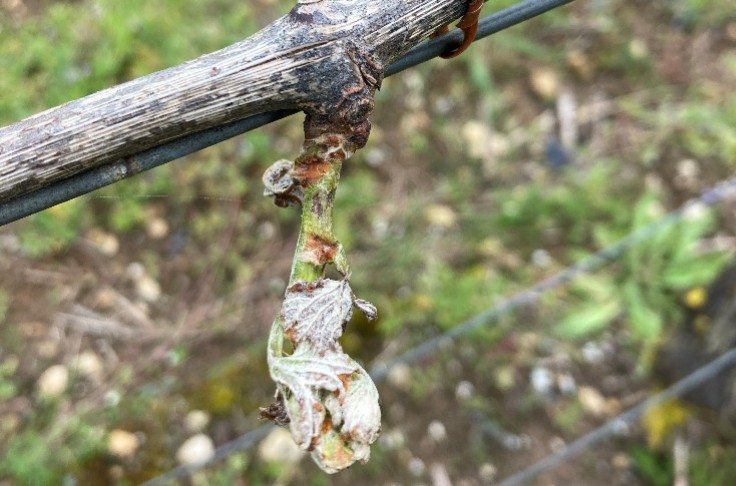Vine leaves burnt by salt-laden breezes in France

ineyards might be accustomed to the damage caused by frost, but salt is not something they are familiar with. “As soon as the westerly wind speed exceeds 70km/hour, the sea breezes laden with salt move in on the canopy, and salt scorches the leaves. They make good weedkillers… That’s our version of frost”, recounts JĂ©rĂ´me Poulard, technical manager at the UnirĂ© co-operative in the Cognac region, which has 520 hectares of vines on-stream, divided between 220 for Cognac/Pineau and 300 for IGP Charentais. With winds blowing up to 120km/hour at the Phare des Baleines at the end of March, damage could be significant with “stems of 7cm where all the leaves are scorched. In some blocks, all the leaves have dropped”, stresses Poulard. Simon Pitoizet at Domaine Arica, which has 11 ha of IGP Charentais vines in Loix, comments that “we have these salt-laden winds every year on the Ile de RĂ©”. He prefers to call it scorching: “It’s not the same as buds that get ‘burnt’ by frost. It really affects the edges of very sensitive leaves, like Chardonnay. Chenin is less sensitive because of its downy leaves”. In all coastal blocks on the Ile de RĂ©, the symptoms cause “a reduction in leaf area and inevitably the vines have a slower rate of growth. But this does not have an impact on the inflorescences at such an early stage. It can occur when there are salty wind storms at the end of May or beginning of June on flowers, which can have a significant impact on crop yields”, explains Pitoizet.
In Languedoc, “this is not uncommon. We see it every other year, but this time the scope is quite remarkable”, comments Thomas Gautier, viticulture consultant with the French Vine Institute (IFV) in HĂ©rault. He points out that one of his colleagues has identified similar damage in the PyrĂ©nĂ©es-Orientales area near the Spanish border. After Easter weekend, he witnessed leaves burnt by salt in 80% of blocks in Marseillan and even found some inland, in Florensac, which is located a few miles back from the coastline. In some early-ripening blocks, particularly Chardonnay with three to four leaves separated, half of the leaves may have been lost with shoots that show total necrosis.






